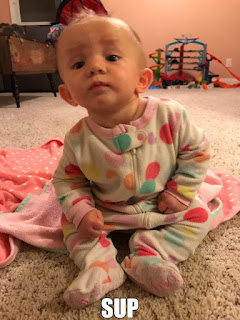There. I said it. If you have the ability to connect your classroom to the world around them, why wouldn't you? Surprisingly, there are still teachers who don't want to or don't think global connections are worth the the time and effort. Frankly, that is providing a huge disservice to your students.
Hangouts or Skype are not extra fluff; they are standards-embedded, engaging, and important.
We have been lucky enough at our school to hangout throughout the world in a multitude of ways, and even the connections that didn't go as smoothly as we would have hoped have taught the students and the teachers unbelievable lessons.
Not only have our students practiced mapping, geography, number sense, and so much more, they have also had the opportunity to learn about the world and the people around them. By learning about the world around them, they can become more globally aware and culturally sensitive.
Coming from a school with little diversity, our students need this type of interaction and education. Our world is shrinking; the fact of the matter is that the students we are preparing today will quite possibly be working and collaborating with others across the globe. Why would we not want to expose our students to these types of experiences throughout their education?
Hopefully at this point I have you convinced and you're thinking
what type of connection can I make? Here are some of my favorite ones!
The Classic Mystery Hangout: Each class must ask yes/no geography-based questions to try to discover where the other classroom is located. For higher level grades, we go beyond state to city. We have also seen our students struggle when trying to discover the location of a classroom outside the United States, so that challenge is always fun to throw in.
Mystery Numbers: Same type of concept but students ask yes/no questions about place value and the numbers. We have gone into the decimals or just 1-120 for our little ones. They ask questions like even/odd, multiple of, prime/composite, etc. to discover the mystery number of the other class.
Read Alouds: Just like you might have a mystery reader visit your classroom, try having a digital guest read your students a story. We even like playing a game of Kahoot against the other class at the end to compare and contrast the 2 stories read or review the story read!
Content-Specific Presentations: While studying ecosystems in science and South America in social studies, students researched ecosystems of local natural wonders to present to a class in Brazil. The class in Brazil then presented about their natural wonders and ecosystems for students to compare and contrast. We've had kindergartners compare and contrast weather with a class in a different part of the county, 5th graders engage in debates, and high school physics students pair up with elementary students to help them develop Rube Goldberg machines; there are so many content-specific ways to connect!
Cultural Tours: Using resources like
Learn Around the World's GeoShow, your class can explore locations and cultures all over the world. If you haven't checked it out, it is a must! Our students learned about local animals, ancient ruins, and even met locals where they were able to ask questions live!
Expert Experiences: Often times it is hard to get an expert in a field to travel to your classroom for the day, but with Hangouts or Skype, they can simply connect and still share their knowledge with your students, local or not! Our students presented marketing pitches to businesses, and we have connected with a head engineer at NASA, museums, and so much more! Reach out on Twitter or Google Plus and many times people can help connect you to experts on a topic, even one that will give a tour while they talk.
WildEarth Live Safari: We just did our first one this week and the kids were in LOVE! You actually join safari guides on live safaris in South Africa while the students get to ask questions.
Here is the sign up information if you want to explore!
Plotting Points Battleship: We take it back old school and play battleship on a -15, 15 coordinate plane. Through the use of shared google docs and a live hangout, students battle by guessing coordinate pairs for hits or misses. The kids plot an unbelievable number of points and they never just want to stop; we always run out of time when trying to play.
Veteran's Day Afghanistan Choir Performance: Our choir was even able to connect with an air force base in Afghanistan on Veteran's Day and sing a variety of patriotic songs. Even cooler, months later the base sent a US flag that had been raised above the base in honor of them.
I could go on and on, but these are some of our favorites. If you want to start connecting, I would join some Google Plus Communities to dip your toe in the water: Connected Classrooms Workshop, Google Hangouts in Education (for Educators), and Mystery Hangout are just a few to get you started!
Grab a webcam and get connecting. The world is at your fingertips!

























